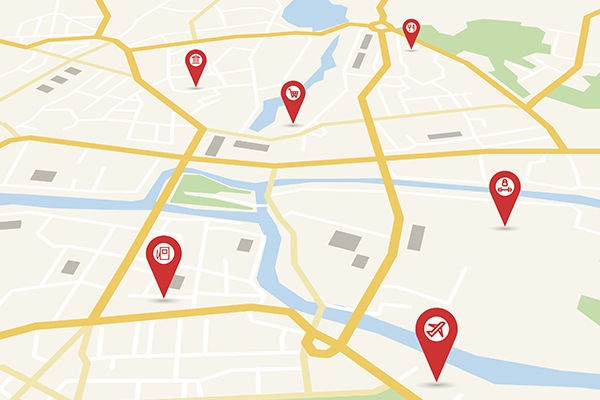If there ever was a scrum in the supply chain, it's last-mile delivery. And it's a worldwide scrum, no less.
From China to Europe to the U.S., companies as divergent as Amazon, SF Express, Shipt, Instacart and XPO Logistics are pushing and shoving their way through the last-mile delivery maze.
Dr. Benoit Montreuil of Georgia Tech puts it much more elegantly. “We are working very hard right now to define the next generation of city logistics service solutions.” Montreuil is the Coca-Cola Material Handling & Distribution Chair at Georgia Tech's Stewart School of Industrial & Systems Engineering as well as director of the Physical Internet Center.
Looking around the world, Montreuil sees a vast difference in last-mile capabilities by continent. He says Europe has been the leader until recently. Now, Asia, especially China, is in the lead due to fast growth, less legacy and brutal competition. The U.S. is in third place. Nevertheless, last-mile is catching on here.
On the surface, last-mile doesn't look all that tough. Just deliver goods from a regional distribution center or retail store to the consumer. But looks can be deceiving. And expensive, too. Some say nearly 30% of the total cost of all goods delivery is in last-mile.
Last-mile delivery is much more than navigating city streets, avoiding traffic congestion and finding the right address. Last-mile is also a matter of actually being able to deliver the goods, especially when no one is home but needs to be. And that doesn't even include the challenges of building security, the scale of high-rises and parking availability. Oh, don't forget the weather.
There are also many different schemes. Montreuil says there are seven different scenarios for last-mile delivery. They range from pickup at the store to ship directly to home and pickup at a nearby locker. His moniker of hyperconnected transportation rings true when you factor in all the transportation scenarios from messengers on bikes, Uber and similar ground-delivery services to the range of pick-up points such as Amazon lockers at Whole Foods grocery stores.
Earlier this month, Montreuil made yet another trip to China where he is working with several logistics service providers, including SF Express, on last-mile delivery.
He says that UPS and Amazon are the leaders in the U.S. with a total of a few hundred last-mile lockers. In China, Montreuil says there are 60,000 lockers. But just as Amazon has its lockers and UPS its, locker banks in China are shared by competitors, says Montreuil. That's a completely different approach.
But it's also an approach that is getting a look in the U.S., says Barbara Ivanov, director of the Urban Freight Lab at the University of Washington. This month and next, she is focused on a test of smart lockers in a 62-story building in downtown Seattle.
Ivanov:
“We're trying to determine if smart lockers can reduce the time trucks spend at the building as well as total truck dwell time and undeliverable patterns.”
Collaboration is of major importance to solving the last-mile challenge, say both Ivanov and Montreuil. Key players are not just the shippers (retailers, distributors, manufacturers) and logistics service providers, (UPS, Shipt, XPO Logistics, Instacart). City and related government groups are essential too. See this issue's NextGen Interview with Ivanov for more details on how her Urban Freight Lab is partnering with the City of Seattle.
Dr. Matthias Winkenbach of MIT echoes the others on the importance of cities in last-mile delivery. “No city is the same and within a city we don't see two areas that are the same – you have to learn from previous delivery processes to become more efficient,” he says. He made the comment at the U.S. Department of Transportation's Volpe Center late last year. Winkenbach is the director of MIT's Megacity Logistics Lab and a research associate at the MIT Center for Transportation & Logistics.
That complexity is also where NextGen technologies enter the picture. They include sensors, big data, data analytics and the Internet of Things, just to start the list.
Wikenbach's Lab makes strong use of data analytics to process delivery route data collected by GPS sensors and other telemetry devices. That is then connected to real-time traffic data and even weather conditions to optimize future last-mile deliveries.
Winkenbach, Ivanov and Montreuil are only at the front end of this process. But down the road, they will guide important efforts to use NextGen technologies to provide data that can translate into more efficient and timely last-mile deliveries in even the most densely populated cities.
Gary Forger is the special projects editor for Supply Chain Management Review. He can be reached at [email protected].
SC
MR


Latest Supply Chain News
- Few executives believe their supply chains can respond quickly to disruptions
- Technology’s role in mending supply chain fragility after recent disruptions
- Tech investments bring revenue increases, survey finds
- Survey reveals strategies for addressing supply chain, logistics labor shortages
- Israel, Ukraine aid package to increase pressure on aerospace and defense supply chains
- More News
Latest Podcast

 Explore
Explore
Software & Technology News
- Technology’s role in mending supply chain fragility after recent disruptions
- Tech investments bring revenue increases, survey finds
- Survey reveals strategies for addressing supply chain, logistics labor shortages
- AI, virtual reality is bringing experiential learning into the modern age
- Humanoid robots’ place in an intralogistics smart robot strategy
- Tips for CIOs to overcome technology talent acquisition troubles
- More Software & Technology
Latest Software & Technology Resources

Subscribe

Supply Chain Management Review delivers the best industry content.

Editors’ Picks





